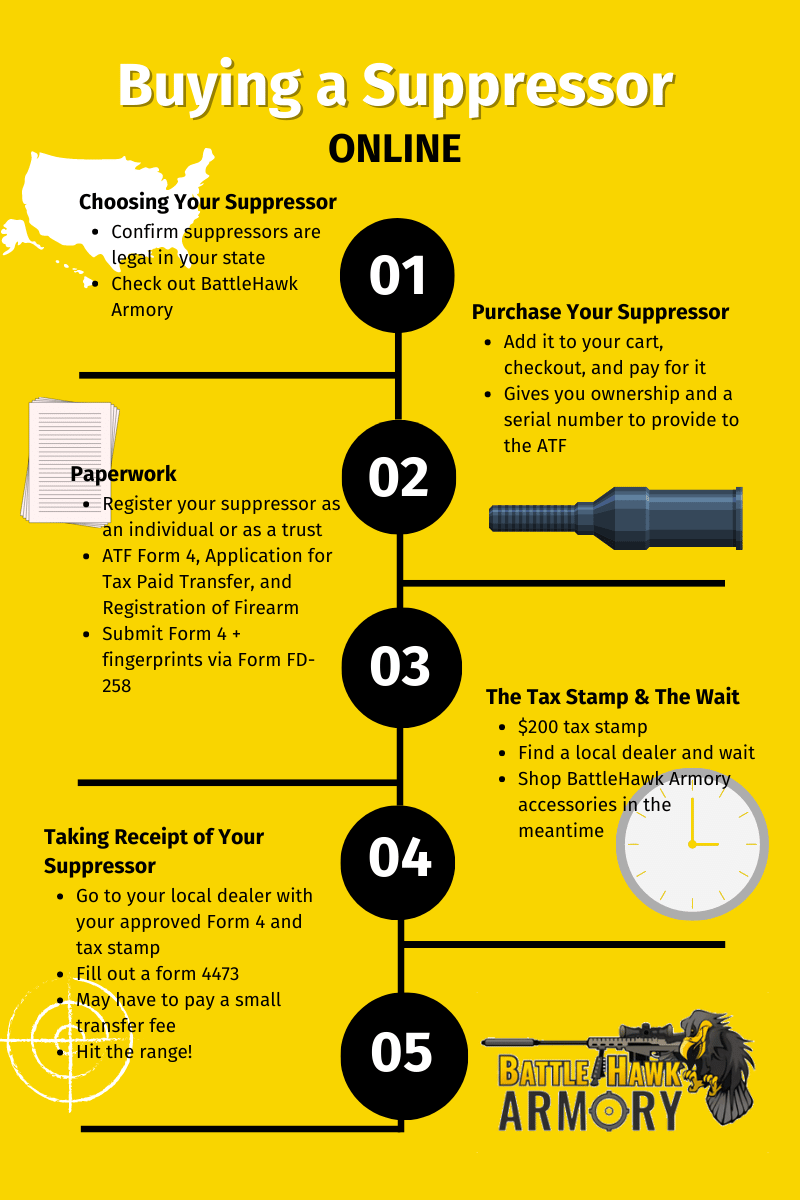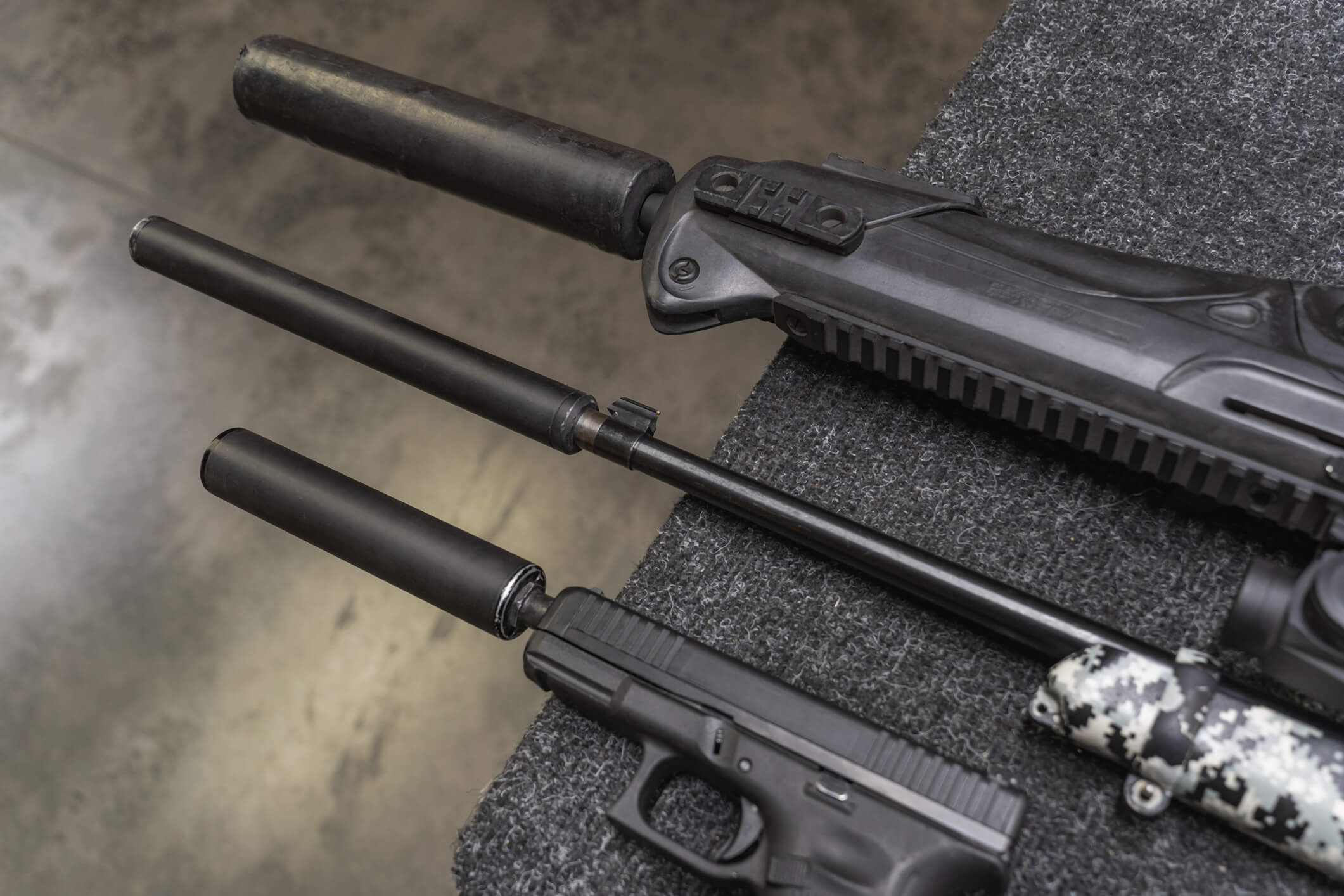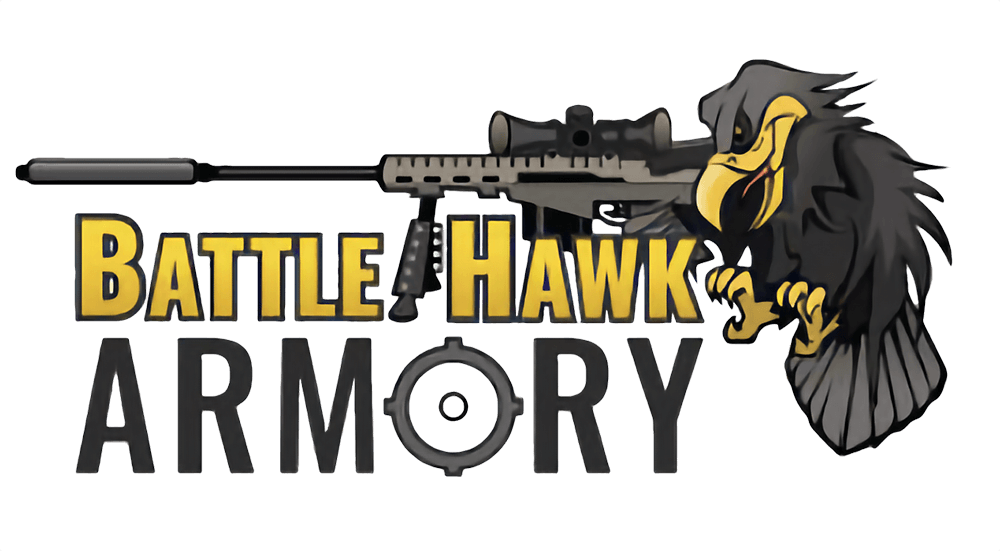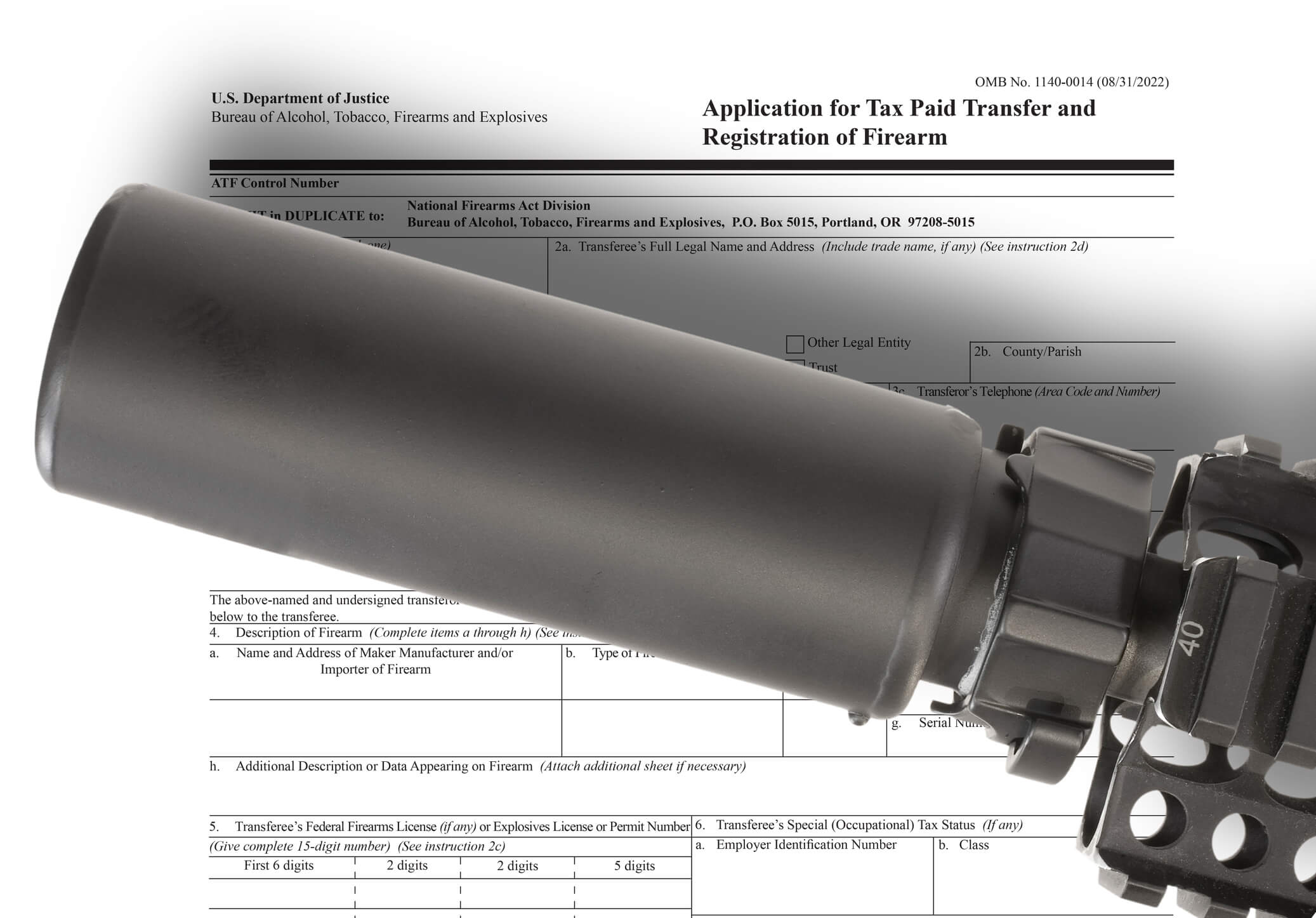Suppressor Buyer Guide – How to Buy a Suppressor Online
In the past few years, more and more shooters have begun to dip their toes into the world of NFA items like Short-Barreled Rifles, Short-Barreled Shotguns, and machine guns. Suppressors are by far the most prolific NFA item and they are becoming one of the most popular firearm accessories, period!
Suppressors offer some tremendous benefits. They reduce the noise of a gun’s report, making shooting less potentially damaging to the shooter’s ears. Reduced muzzle blast can also aid in accurate shooting, and suppressors can reduce recoil. They can also prevent game from being spooked when you shoot, and permit you to shoot in some areas where gunfire would otherwise be bothersome to neighbors. And suppressors are just plain cool!
But buying one isn’t as straightforward as purchasing a firearm. There are some additional hoops to jump through to own a suppressor, including a hefty $200 tax stamp on each suppressor you own. This guide will get you started along the process, and if you have any questions, you can contact Battlehawk Armory’s customer support. We’re happy to help!
Suppressor ownership is becoming more and more common but it can still be intimidating with all the necessary paperwork and a bureaucratic process to figure out. Let’s take a look at the entire process of purchasing a suppressor online. Keep in mind that this guide isn’t all-inclusive, and in any event, the rules are subject to change, but this should get you off to a good start!

1. Choose Your Suppressor
The first step is to determine if suppressors are legal to own in your state. Suppressors are illegal in some states, including California, Delaware, Hawaii, Illinois, Massachusetts, New Jersey, New York, and Rhode Island. Suppressors are also illegal in our nation’s capital, the District of Columbia. They are legal in all other states. If you live in a state where suppressors are legal, then proceed to the next step. If not, call your legislators and support gun-rights advocacy groups!
The next step in this journey is to pick your suppressor. Battlehawk Armory has an incredibly expansive selection of suppressors on the market, including rimfire, rifle, pistol, and shotgun suppressors, from .22-caliber to .50-caliber. Battlehawk Armory offers suppressor brands from Advanced Armament to B&T, Dead Air to Gemtech, Q to Rugged, Sig to SilencerCo and Wilson Combat to Yankee Hill Machine.
Deciding on a suppressor also means deciding on a host: what platform are you going to put the suppressor on? This will drive caliber, size, and other factors. Though “decibels” (as in the amount of noise reduction) is a huge consideration, you also need to balance that with size and weight. The bigger the can, the more sound reduction…but it’s also bigger and heavier.
Another consideration is budget: there is a can for every budget out there, and you need to find one that meets your budget.
2. Purchase Your Suppressor
Once you have chosen your suppressor, go ahead and purchase it from Battlehawk Armory. Add it to your cart, checkout, and pay for it, just like any other time. Unfortunately, even though you technically own it, you won’t get it immediately. This makes the suppressor “yours” and provides you with a specific serial number to provide to the ATF. Now you can move on to the next steps.
3. Paperwork
Now the drudgery of paperwork begins. Or actually… electronic paperwork. You can submit hard copy paperwork, but the wait times are longer, the reason for the popularity of the ATF eForms, which we recommend. The wait times (at the time of this writing) are 287 days for paper and 225 for eForms. If you plan on using electronic forms (we recommend you do) go ahead and set up an account.
Before filling out anything you will need to decide if you want to register your suppressor as an individual or as a trust. There are pros and cons to each. Purchasing as an individual is slightly simpler and more straightforward. Registering the suppressor to a trust allows you to designate “responsible parties” who can use the suppressor without your supervision, and simplifies the process of passing the suppressor on upon your death. Setting up an NFA trust is a little more work upfront, but it does have some big benefits.
If you wish to create a trust you will need to see an attorney or utilize one of the various online services that can do so for you. Once the trust is set up you can register additional NFA items to it if you like. Once you have decided on individual versus gun trust it’s time to do Form 4. You will need to fill out an ATF Form 4, Application for Tax Paid Transfer, and Registration of Firearm. This rather intimidating-sounding form is actually fairly easy to fill out. You will have to provide some information about yourself, your trust (if using a trust), and the suppressor itself, including the suppressor manufacturer, model, and serial number (this is why you must purchase the suppressor first).
Once you have completed the Form 4, you will submit it via eForms. Along with it, you will also have to provide a set of fingerprints via Form FD-258. This can be an electronic copy or paper copy, even if using eForms. You will also have to submit a digital passport photo. You can take this photo yourself.
4. The Tax Stamp & The Wait
You have doubtlessly heard about the tax stamp or transfer fee on suppressors. This is a real thing, and each and every NFA item you own – be it a suppressor, short-barreled rifle, short-barreled shotgun, machine gun, or destructive device – requires a valid tax stamp. The stamp costs $200. This is another important consideration when choosing a suppressor; it is a good idea to get one that is versatile, as these transfer fees can really add up the more suppressors you purchase.
Once all the paperwork has been submitted, now you play the waiting game. The “official” wait time for a suppressor, as we mentioned is 225 days and counting (and seems to be trending up). That’s seven and a half months. In reality, it may be even longer. While you are waiting, be sure to shop Battlehawk Armory for all the accessories you need like muzzle devices, pistons, suppressor-height sights, suppressor covers, and more!
You can also use this time to find a local dealer. Usually known as “Class 3” or “SOT” dealers you need a FFL dealer who can lawfully take receipt of the suppressor and transfer it to you.
5. Taking Receipt of Your Suppressor
Once the wait is over and the ATF has approved your application you will now have to wait a little longer. If you purchased as a trust, your local Chief Law Enforcement Officer (CLEO) (usually the county sheriff) must be sent a copy of your application. The CLEO has seven days to respond with any information that would impact your application. After that, the suppressor is released to your local dealer.
Now you simply go to your local dealer with your approved Form 4 and tax stamp. You will have to fill out a form 4473, the form you typically fill out when purchasing a firearm. Once this is filled out the dealer may charge a small transfer fee of $25-50 for the shop’s time and trouble. Now you can walk out of the shop, put your suppressor on its host, and head to the range! It is important to note that you should always keep a copy of your Form 4 with the item in case you should be pulled over or otherwise interact with law enforcement.
And that’s pretty much the entire process. It sounds complicated, and in some ways it is. If you just take it one step at a time, however, it is completely manageable. We compare it to the first time you ordered a firearm online; it was probably a little challenging to find a dealer who would take receipt of the gun and transfer it, but now that’s old news. The only real “problem” is that once you see how easy it is you’re going to want more and more NFA items!

How BattleHawk Helps
Battlehawk Armory offers the best selection of suppressors. We also sell more than just about anyone, so we have some of the best prices available – you’ll have a hard time finding a cheaper suppressor anywhere. Often times the savings you get on a suppressor from Battlehawk Armory can offset the cost of the onerous ATF transfer fee by quite a lot. And if you run into snags during the purchase process, we’re here to help. Simply contact our customer service department and we’ll help you in any way we can.




